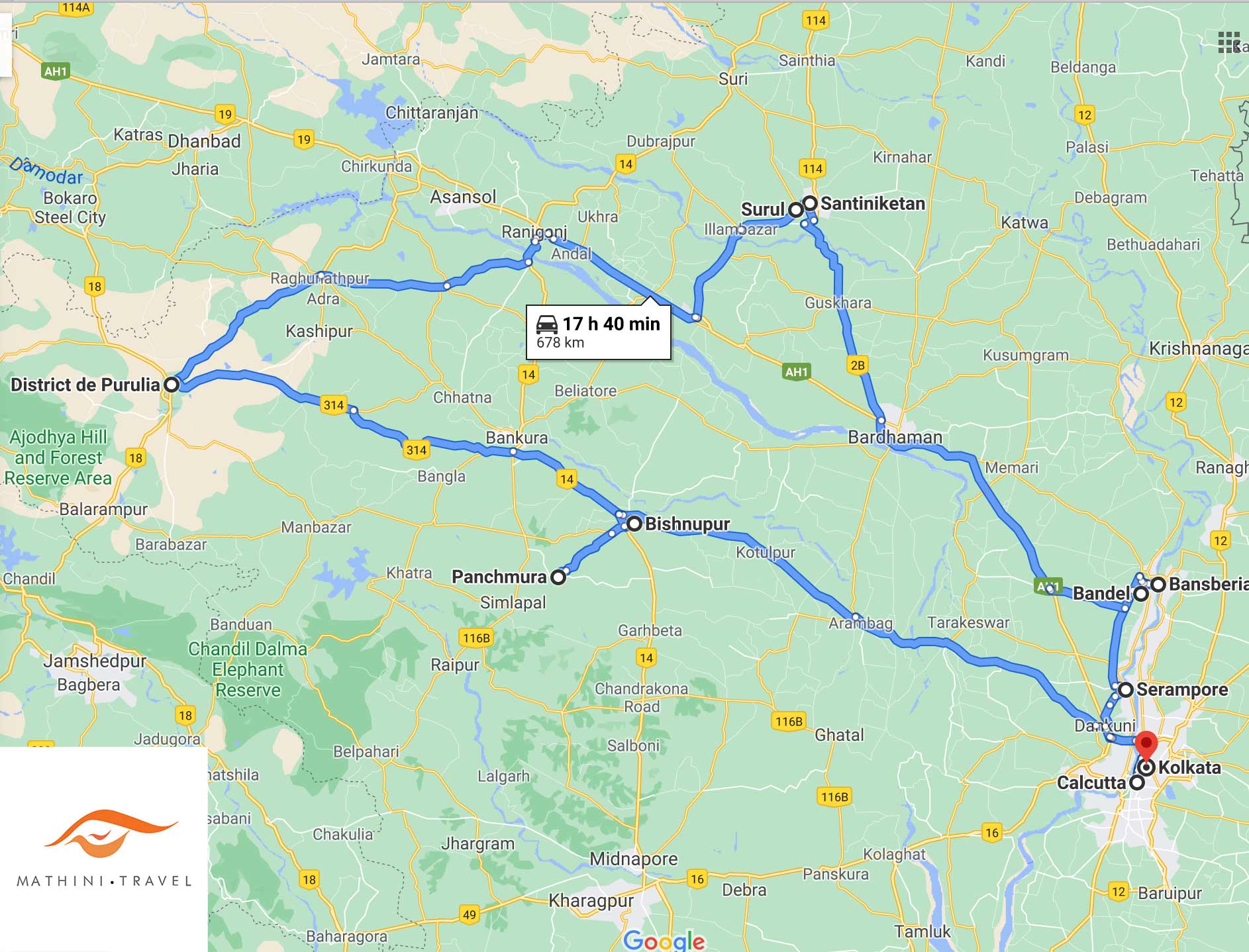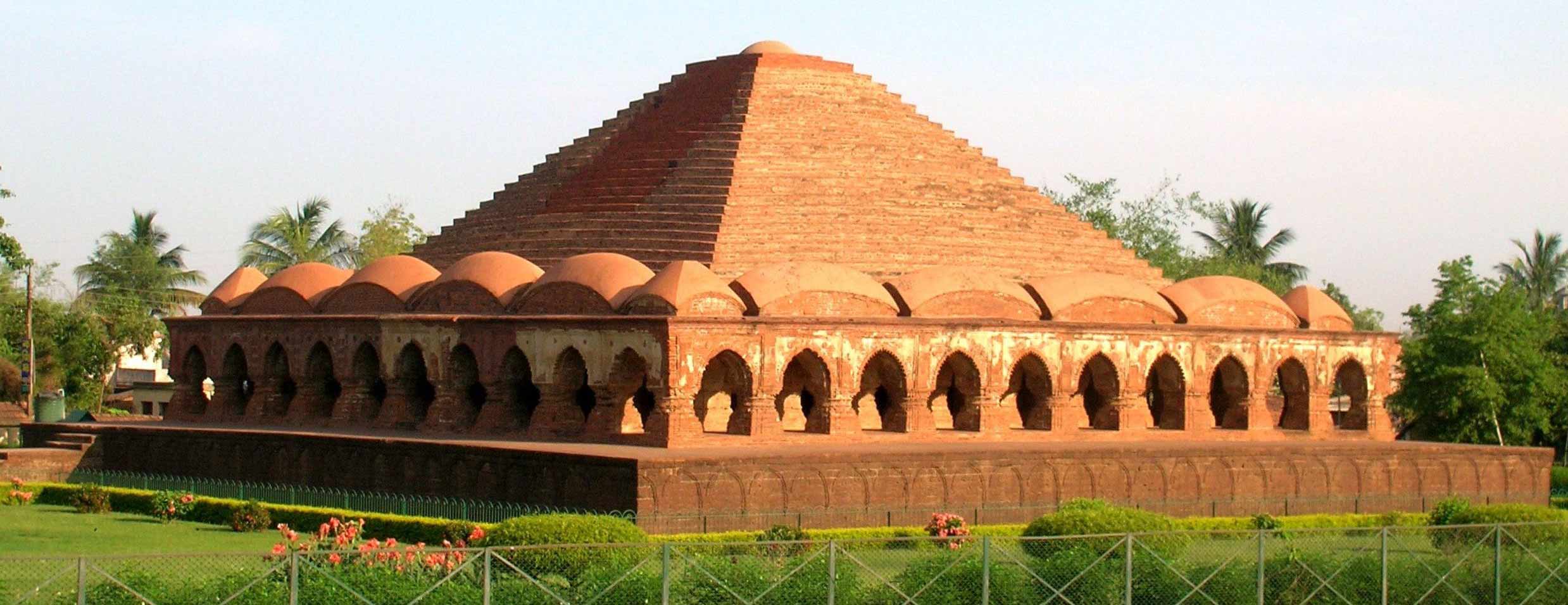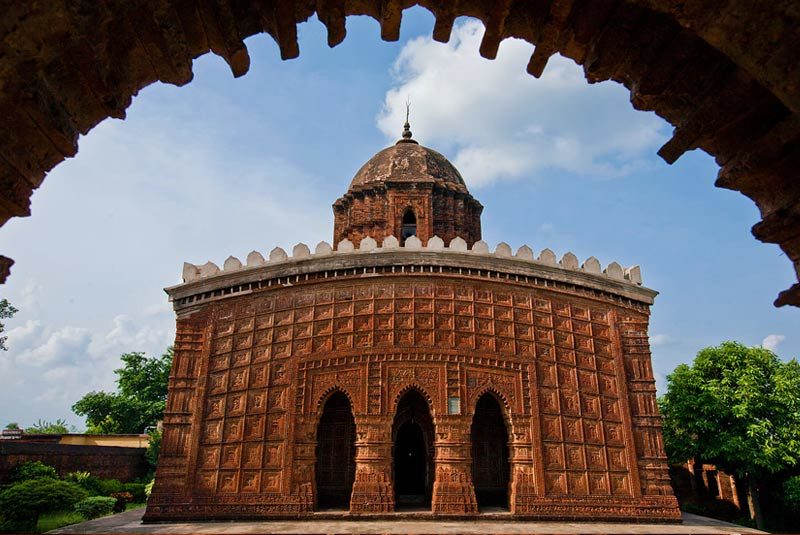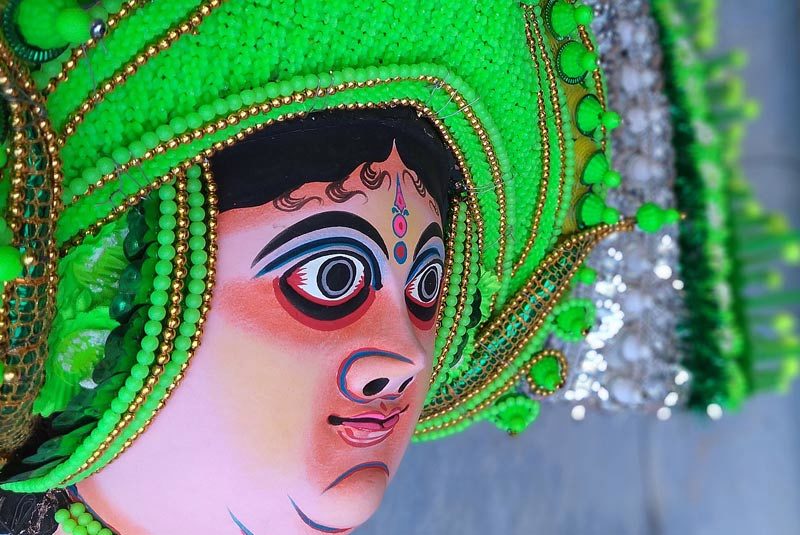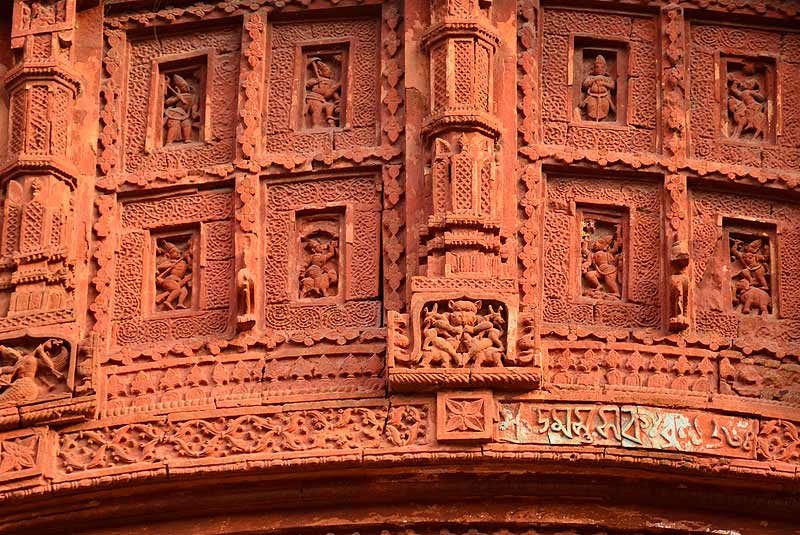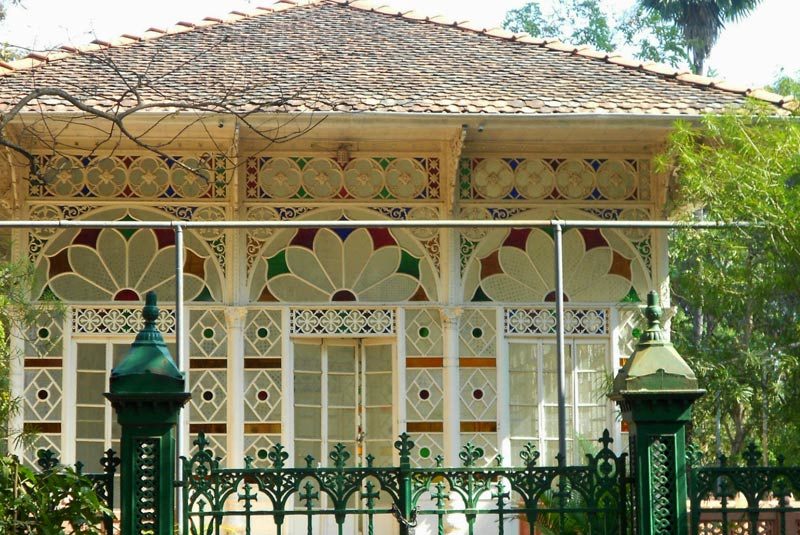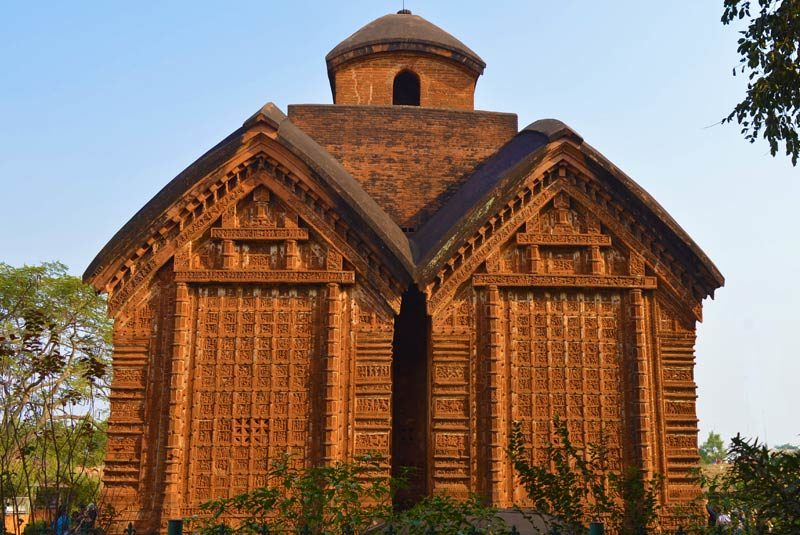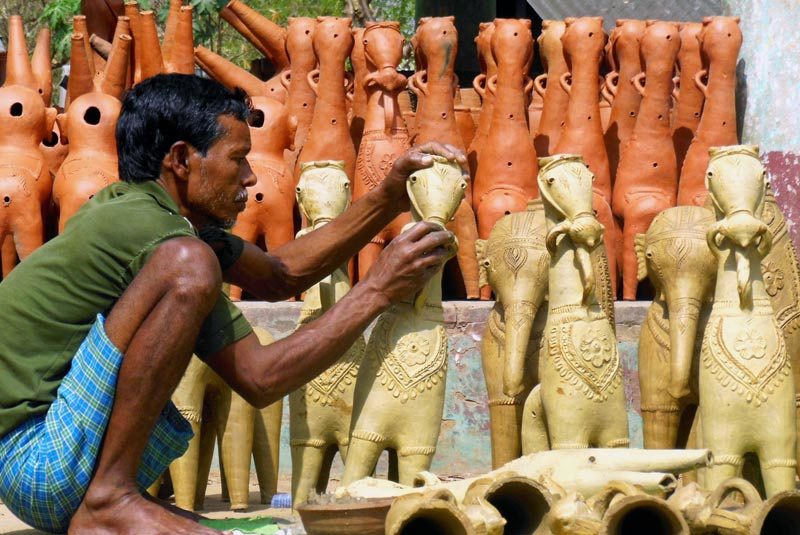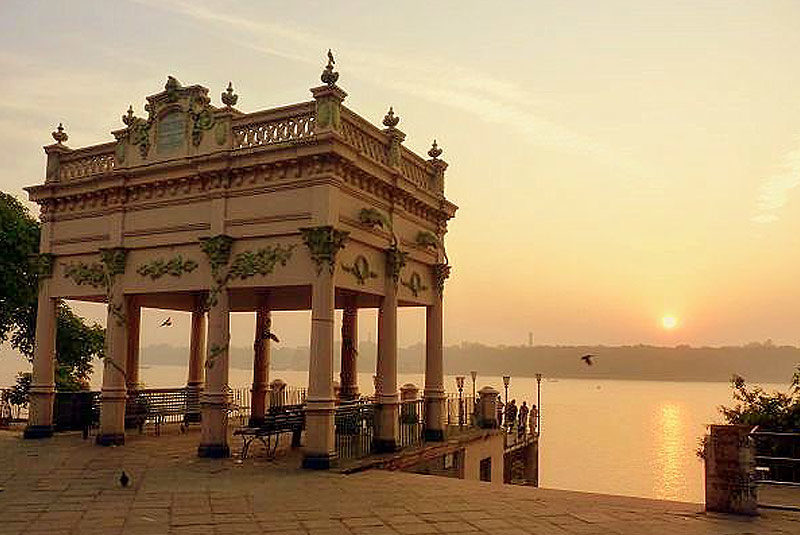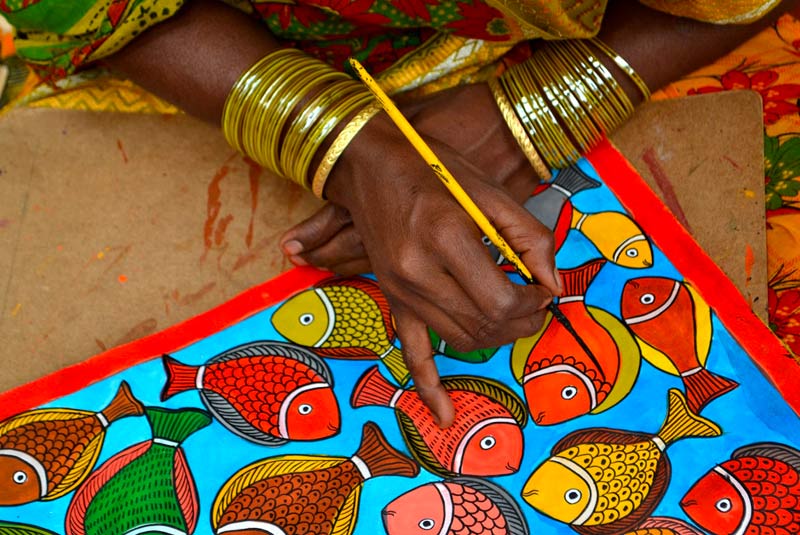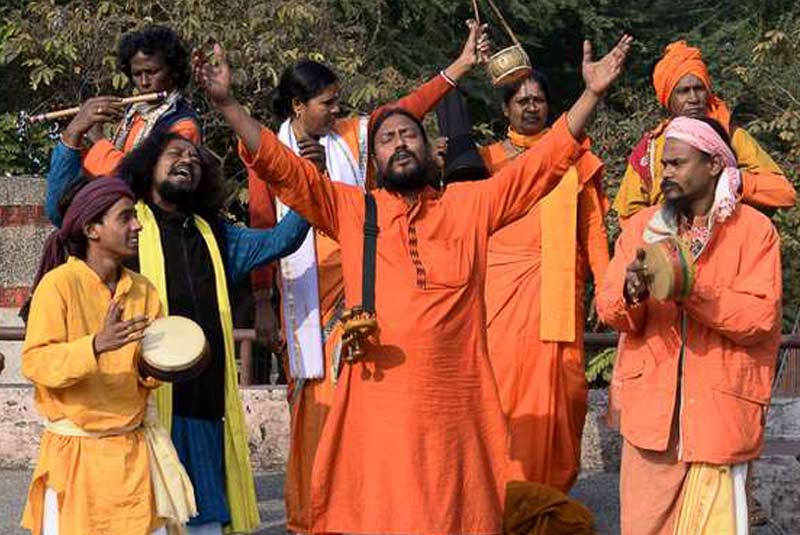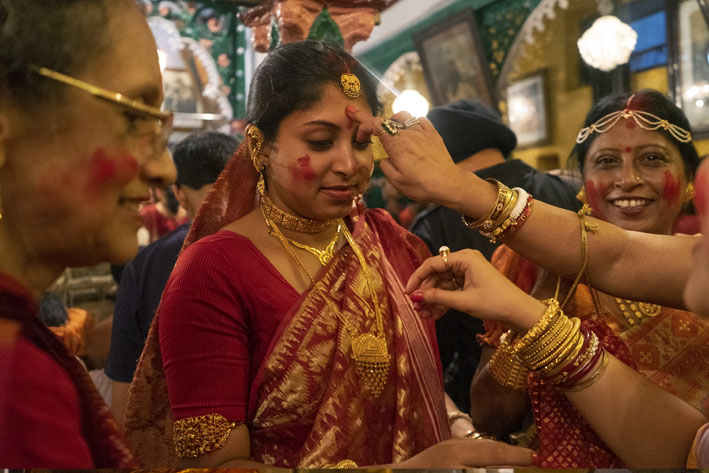The terracotta temples of West Bengal
A week exploring the famous brick temples of West Bengal, a reflection of the unique culture that once roamed the land of Rabindranath Tagore.
Terracotta temples are unique to West Bengal, where brick was once one of the main building materials. During this trip, we will visit the most famous brick buildings in this state, starting with Bansberia, north of Kolkata, then Guptipara, Kalna, and Supur. We will end with Bishnupur, the flagship site for this type of temple.
This “terracotta” route will also give us the opportunity to discover other fascinating places: first of all the colonial heritage of West Bengal laid along the Hoogly River then Shantiniketan, a university complex created by the poet and Nobel Prize winner for literature Rabindranath Tagore.
We will then take a break in Purulia, a small town where the famous semi-classical Chhau dance was born with its expressive masks. From Purulia, we will continue to the small hamlet of Panchmura, which makes the famous “Bankura” terracotta horse known throughout the world. We will conclude with the village of Bikna renowned for the art of Dokhra and its houses delicately decorated with Adivasi motifs.
You may also like...
Kolkata - along the Hooghly River - Itachuna Rajbari
*
We will begin with Serampore and its buildings reflecting its Danish past. After this visit, you will be invited to take a short coffee break at the Danish Tavern, a historic hotel and restaurant built in 1786.*
We will continue to Chandannagar, a former French colony, followed by Chinsurah where the Dutch settled. From Bandel, a former Portuguese colony, we will continue to Bansberia, our first discovery of terracotta temples.*
After this rich heritage tour, we will spend a royal night at the heritage hotel Itachuna Rajbari, a former 18th-century residence.Itachuna Rajbari - Shantiniketan
*
En route, we'll make two terracotta stops: Guptipara, for its four brick temples dedicated to Vishnu (and its signature dish, "makha sandesh"), and Kalna, for its Pratapeswar temple, which features beautiful interlaced terracotta motifs.
Overnight in BolpurShantiniketan (Bolpur) - Surul - Supur - Itonda - Shantiniketan
*
A few kilometers away, we will discover the small village of Surul, which includes a beautiful Rajbari (mansion) built by Srinivas Sarkar, a businessman who made his fortune selling sails for ships.*
15 minutes from Surul, in Supur, we find small terracotta temples which, although faded, are still charming: Lakshmi Janardhan, the twin rekha-deul temples dedicated to Shiva, and two temples built by Srivinas Sarka.*
Not far from Supur, in Itonda, we will visit the Jora Bangla temple dedicated to the fierce goddess Kali. Return to Bolpur at the end of the day.Shantiniketan - Matha
*
We will stay at the Matha Forest resort located at the foot of Pakhi Pahar, a hill sculpted by the artist Chitta Dey over several decades.*
After lunch, we will depart for Charida, a picturesque red-soiled village located in the foothills of the Ayodhya Hills (10 kilometers from the resort). More than 300 Chhau mask makers work there. Overnight stay in a deluxe tent at a resortMatha - Purulia - Murguma - Matha
*
We will continue to Purulia, another mask-making town, then return gently to Matha, still surrounded by enchanting natural scenery. Private Chhau dance performance in the evening. Overnight stay in a deluxe tent at a resortPurulia - Bishnupur
Bishnupur – Panchmura – Bikna – Bishnupur
*
First, Panchmura, a small hamlet 20 km from Bishnupur, a stronghold of terracotta artisans; 70 families make their living here from this folk art. The famous, world-renowned "Bankura" horse is made in Panchmura.*
We will continue to the village of Bikna, known for the art of Dokhra or "lost wax casting." This type of metal casting has been used in India for over 4,000 years. We'll stroll through the village's narrow streets while admiring its houses delicately decorated with Adivasi motifs. Return to Bishnupur at the end of the day.Bishnupur – Kolkata
